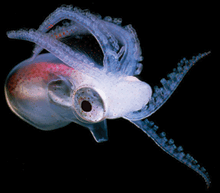
RADIATION SAFETY TRAINING! This afternoon, tomorrow afternoon, and Wednesday morning, I’ll be taking the radiation safety and methodology course here at UBC. I need to get certified to use radionuclides, since many of our plans will involve using radiolabeled DNAs to optimize our protocols for purifying uptake DNA from different cellular compartments.
I believe this will be the 5th or 6th time I’ve been through such a training course, but I’m sure I can use a refresher. The type of radioactive isotopes used by biologists are typically not very dangerous. I’ll be using 32P, an isotope of phosphorous, which decays quickly and emits beta-particles. Luckily beta-particles are easily blocked by just a little bit of shielding, so it’s easy to avoid getting exposed to the radiation by simply by keeping some plexiglass between yourself and the radiation. The amount of exposure that a lab worker will get from using such a radioactive source is typically less than that faced by someone living at a high altitude (i.e. closer to the sun, like in Denver, Colorado).
Indeed, I'd rather work with radioactive materials than a serious mutagen, like EMS. If I spilled a little radioactive material, I'd easily be able to tell where it dropped using a Geiger counter, facilitating clean-up. But if I dropped a little bit of EMS somewhere, I wouldn't be able to tell where it was, so getting exposed would be much more likely. So despite many people's fears about working with radiation, it's really quite safe, as long as proper protocols are followed.

I should just add: The UBC radiation safety course, while long, has an awesome lab section! In which we cleaned up radioactive spills from outlandish locations!
ReplyDeleteThat was pretty awesome, though I'll admit the puppet show featuring the Putah Creek Beaver at UC Davis's radiation safety training was also no slouch.